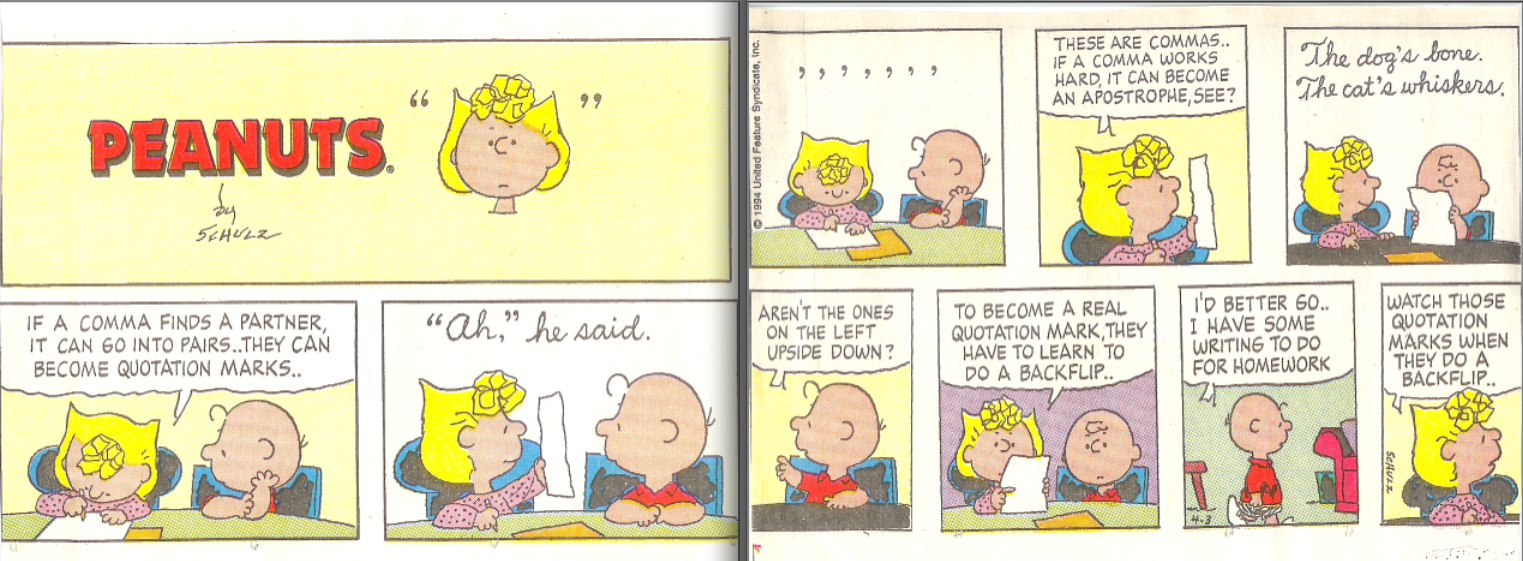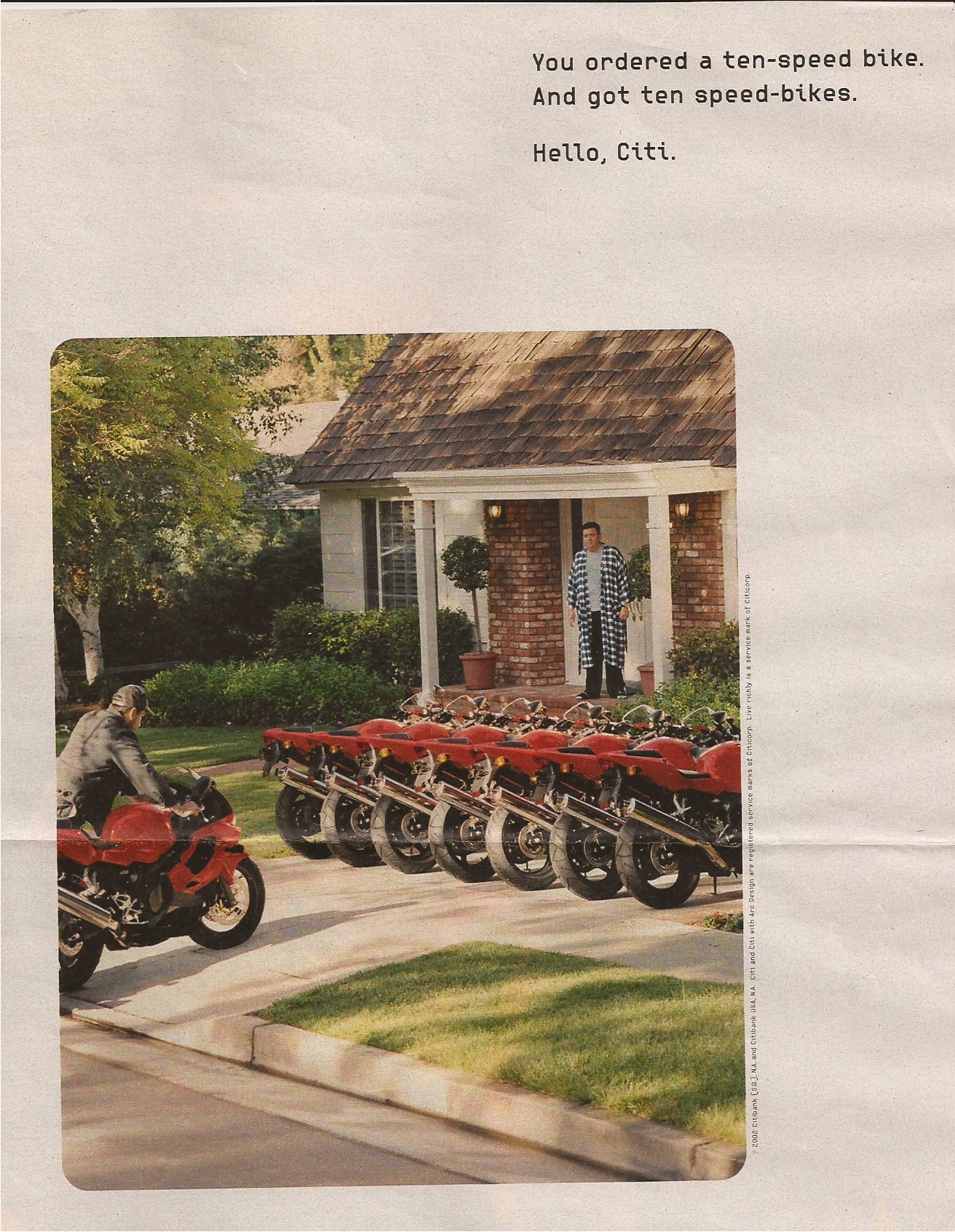|
Last Update: Thursday, 9 August 2018
Note: |
|
Last Update: Thursday, 9 August 2018
Note: |
http://www.cse.buffalo.edu/~rapaport/HOWTOWRITE/
which has links to other helpful Web sites (indicated in some printed versions by underlined phrases).
Strunk, William, Jr.; & White, E.B.
(1918/1935/1959/2000),
The Elements of Style, 4th Edition
(New York: Allyn & Bacon/Longman/Pearson).
The program listing should either be presented as figures
throughout the paper, or as an appendix. In either
case, the listing is included as documentation for what you say
in the paper.
Rapaport, William J. (1986), "Logical Foundations for Belief
Representation", Cognitive Science 10: 371-422.
Schagrin, Morton L.; Rapaport, William J.; & Dipert, Randall D. (1985),
Logic: A Computer Approach (New York: McGraw-Hill).
Shapiro, Stuart C., & Rapaport, William J. (1987), "SNePS Considered as
a Fully Intensional Propositional Semantic Network", in Nick Cercone &
Gordon McCalla (eds.), The Knowledge Frontier: Essays in the
Representation of Knowledge (New York: Springer-Verlag): 262-315.
Rapaport, William J. (2002), "How to Study",
[http://www.cse.buffalo.edu/~rapaport/howtostudy.html].
Aune, Bruce
(2001),
"Punctuation and Syntax" [PDF].
But the announcer read it incorrectly as if it lacked those
commas:
The first sentence has the Governor saying that Koelmel
brings lots of experience.
The second sentence has Koelmel saying that the Governor
brings lots of experience!
because that would really have been a use of "scare quotes" and
would have meant almost exactly the opposite of what I meant.
See
Swartz, Norman (1997),
"Use and Mention", for more information.
E.g., instead of "All of his grades were A's", say something
like "All of his grades were ‘A’ grades".
Just for the record, there is a distinction between a hyphen (-),
an en-dash (–), and an em-dash (—).
- (hyphen)
This article
is about em-dashes, which are the longest.
In the comic below, a hyphen would have clarified things (and, of
course, ruined the joke :-)
Reply: The rule is simple:
When you've got a compound adjective (like ‘rule’+‘extraction’) that is
modifying a noun (like ‘technique’), you hyphenate the adjective;
otherwise, you don't. So:
If you didn't hyphenate it, it would be ambiguous between:
and
and, in LaTeX, are created by using 2 hyphens: --
and you decide to shorten it, you might write:
"A: Not grammatically because SINCE and AS are equated with BECAUSE.
But AS is a poor choice, since AS also has a temporal sense.
With AS, the example may mean either WHILE SIDNEY WAS LEAVING or
BECAUSE SIDNEY WAS LEAVING. For the sake of clarity, use BECAUSE..."
(Morton S. Freeman,
"Word Watcher", Buffalo News (1999).)
Here are some potentially ambiguous, real-life uses of "as":
Does it mean:
Does it mean:
Does it mean:
"These metatheories are acknowledged as some new
approaches to developing intelligent tutoring systems basesd on these
theories are currently under way."
Does it mean:
"Jabberwocky is a fitting text to analyze meaning
recovery as it is most famous for its ability to convey meaning despite
the vast number of nonsense words. As Alice describes the
passage, "Somehow it seems to fill my head with ideas—only I don't
exactly know what they are!" "
For another example, click
here.
Presumably, what they should have said was:
Instead, they seemed to be saying this:
For another example, click
here.
For yet another (unprintable) example, click
here.
Endnote:1.3. Proofread your paper, and check for spelling errors!!!!
(Randy K. Milholland, Something Positive Comic, 07-03-05)
See
Liptak, Adam (2004),
"Judge
Finds a Typo-Prone Lawyer Guilty of Bad Writing",
The New York Times (4 March): A16.
1.4. What kind of paper?
The paper does
not have to be laser- or inkjet-printed;
dot-matrix printing, however, should be
dark enough to be legible.
Oversized
computer printouts (the kind with guide-holes) should be trimmed, if
necessary, to 8½" x 11".
1.5. Do not use double-sided printing.
That's fine for
drafts, but not for the final product to be handed in.
1.6. Number all pages.
1.7. Do not use running heads or foots (feet?).
1.8. Double space everything you type.
1.9. Margins.
1.10. Paragraphs.
1.11. Order of Material.
In general, the material in your paper should be ordered as follows:
1.12. Title of Paper.
TITLE OF PAPER
Your Name
Date
Number and title of course
be sure to have a subtitle
that is descriptive,
separated from the cute title by a colon
(e.g.,
"Trials and Tribulations: A Complexity Analysis of Three Sorting Algorithms").
see
Jacobson, Jennifer (2004),
"No Mark of Distinction",
Chronicle of Higher Education (9 January): A14-A15.
1.13. Don't do any of the following!
1.14. Include an Abstract.
for the latest list, do a
google.com search on
"how to write an abstract".
1.15. Do not use a table of contents.
1.16. Use a staple.
1.17. Separate sentences with precisely 2 blank spaces.
1.18. Footnotes or endnotes
(But on Webpages, endnotes are just about the only possibility.)
1.19. Using Box-and-Arrow Diagrams:
"One picture is worth a thousand words, provided one uses another
thousand words to justify the picture."
— H.M. Stark, cited in
American Mathematical Monthly
102 (1995) 751.
McDermott, Drew
(1981),
"Artificial Intelligence Meets Natural Stupidity",
in
John Haugeland (ed.),
Mind Design: Philosophy, Psychology, Artificial
Intelligence
(Cambridge, MA: MIT Press, 1981): 143-160.

1.20. Keep Your Audience in Mind:
1.21. Edit Your Paper:
Cahn, Steven M.; & Cahn, Victor L. (2013),
"Polishing Your Prose:
How to Refine Your Writing, Word by Word, Phrase by Phrase, Sentence by
Sentence",
Chronicle of Higher Education
59(24) (22 February): A23.
1.22. Some Good Books to Consult:
Pullum, Geoffrey K. (2009),
"50 Years of Stupid Grammar Advice",
The Chronicle [of Higher Education] Review
55(32) (April 17): B15–B16.
And for replies to Pullum, see:
2. Special Information for Programming Projects
All programming projects should be written as reports.
In the real world, you will be expected to write papers, either for
presentation at conferences, publication in
journals, or presentation to your boss or co-workers. No one
reads computer programs except the
programmer him- or herself, or someone else who has to modify
the program. Users and other people want
to read about the program, what it does, how it works, etc., and
to see it in action. Consequently, the main
product of your work is the paper, not the program! In the
paper, you should say what you have done, and
say (in English summary, not in programming detail) how you have
done it. It should also include annotated
examples of your program in action. These should be well chosen
to illustrate the range of performance of
your program. The examples should not be redundant, nor included
merely because they look complicated.
Each example should illustrate a particular ability of your
program. Nevertheless, the reader will assume that
your program does nothing interesting that isn't illustrated!
You should read Shapiro, Stuart C. (1999),
"NimLearn: A Learning Nim Player", to see an example of a such a
paper. By reading that paper, you might
also learn some good Common Lisp programming techniques. (You
can run the nimlearn program by running
ACL, and loading /projects/shapiro/AIclass/nimlearn.)
3. How to Handle Citations
DON'T PLAGIARIZE!
NOT EVEN ACCIDENTALLY!!
3.2. References for quotations must include page numbers!
Clearly, a system capable of reasoning about an agent's beliefs
must be able to handle quasi-indicators if it is not to draw faulty
conclusions. Moreover, theories that do not take quasi-indexical
reference into account do so at the expense of being unable to represent
an important category of beliefs, namely, beliefs about oneself. And a
number of philosophers, from John Perry (1979) to, most recently, Myles
Brand (1984), have emphasized the importance of such beliefs for
explaining and producing actions. (Rapaport 1986: 379.)
3.3. Format for in-text references.
Last_name year
3.4. References.
For an article:
Last_name, First_name (year), "Title", Journal vol: pages.
For a book:
Last_name, First_name (year), Title (city: publisher).
For an article in a book:
Last_name, First_name (year), "Title of Article", in Editor_name (ed.),
Title of Book (city: publisher): pages.
For a Web page:
Web_Page_Author's_Last_Name, First_name (date of webpage if
given, else date retrieved), "Title" [URL_in_brackets]
For further information, see a good style manual, such as:
4. Some Rules of Thumb about Grammatical Issues
4.0 A Good On-Line Reference
A good on-line reference is
The American Heritage Book of English Usage
4.1 Punctuation
A useful document on how to punctuate is:4.1.1. Commas (,)
When in doubt, leave them out!
A radio news
announcer tried to read the following sentence that correctly
contains a set of paired commas:


4.1.2. Semi-colons (;)
4.1.3. Colons (:)
4.1.4. Double quote marks ("/" or “/”)
"Don't" use them to emphasize a word or phrase.
4.1.5. Single quote marks ('/' or ‘/’)
4.1.6. Capital letters
4.1.7.
Apostrophes (')
4.1.8. Dashes (—)
To make this distinction visible, here they are:
– (en-dash)
— (em-dash)
Rule extraction is what you're studying.
You are studying rule-extraction techniques.
rule-extraction techniques
rule extraction-techniques (whatever that might mean).

4.1.9. Ellipsis (…)
The ellipsis is the most frequently misused punctuation.
The ellipsis is…frequently misused….
4.2. Word Confusions
An excellent online document on word confusions is:
Brians, Paul,
"Common Errors in English Usage"
![]() link
link
4.2.0. "Affect" vs. "effect":
4.2.1. "As" vs. "because" vs. "since":
This last reading is arguably impossible, but the
example is a "garden-path" sentence [you're "led down
the garden path" if you read "as" to mean "be"], and thus awkward
in any case.
4.2.2. "It's" vs. "its":
4.2.3. "Of" vs. "have":
4.2.4.
"Their" vs. "they're" vs. "there":
4.2.4. "Try to" vs. "try and":
4.2.5. "Which" vs. "that":
"You have the option to submit a seperate [sic] $65 check for each child
that you will get back when you work the concession stand."
—
Lou Gehrig Youth Baseball on-line registration form (2004)
"You have the option to
submit a separate $65 check for each child, which you will get
back...";
i.e., you'll get the check back.
For each child that you
get back when you work the concession stand, you can submit a $65 check;
i.e., you pay us $65, and we'll give you a child :-|
4.2.6.
"Yay" vs. "yea" vs. "yeah":
It rhymes with, and means, "hurray".
it is the opposite of "nay".
4.2.7.
"Your" vs. "you're":
4.2.8. "We" vs. "I":
4.2.9. "e.g." vs. "i.e.":
4.3. "He" vs. "She" vs. "She or he" vs. etc.
On whether to say "he" or "she" or "she or he" or "s/he" or "they"
(etc.), see:
Warren, Virginia L. (2001),
"Guidelines for Non-Sexist Use of Language".
5. Why Do All This? Why Worry about Grammar, etc.?
Because:
"These are not things most readers will see, nor should they, for craft
should be experienced the way we do our eyeglasses or contact lenses, as
something that enables us to see while not calling attention to itself."
—Johnson, Charles (2013), "The Truth-Telling Power of Fiction",
The Chronicle [of Higher Education] Review (6 December):
B14–B16; quote on p.B15.
[1] Like this one did. But keep footnotes or endnotes
to an absolute minimum. Important
information, such as the information in this note, should really appear in
the text, not in a footnote or endnote!
(back to text)
Text copyright © 2002–2018 by William J. Rapaport
(rapaport@buffalo.edu)
Cartoon links and screen-captures appear here for your enjoyment.
They are not meant to infringe on any copyrights held by the creators.
For more information on any cartoon, click on it, or contact me.
http://www.cse.buffalo.edu/~rapaport/howtowrite.html-20180809